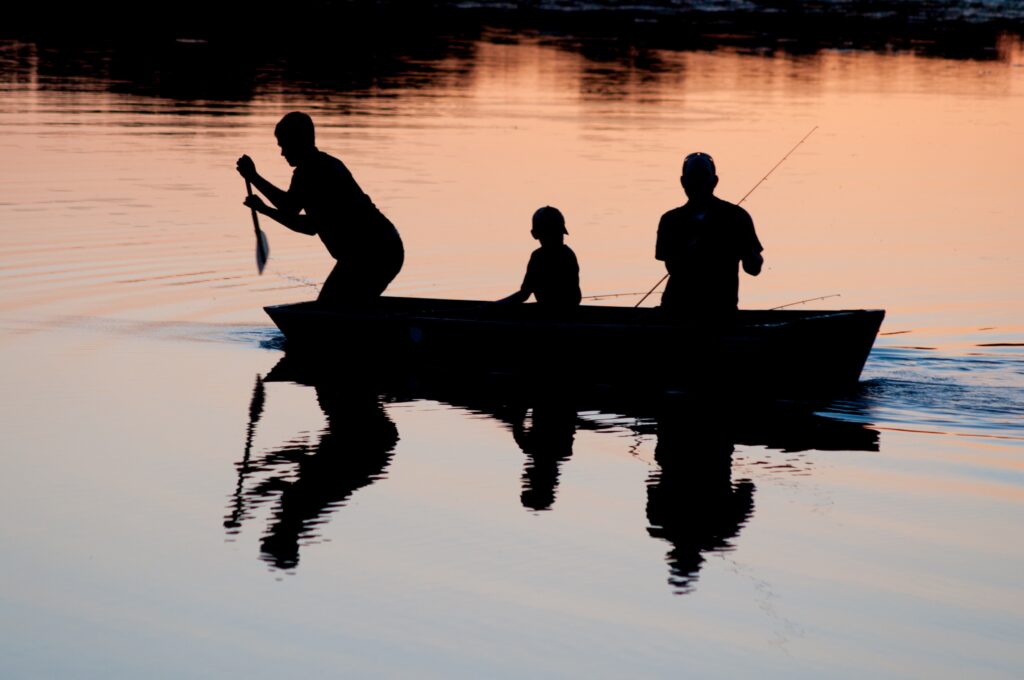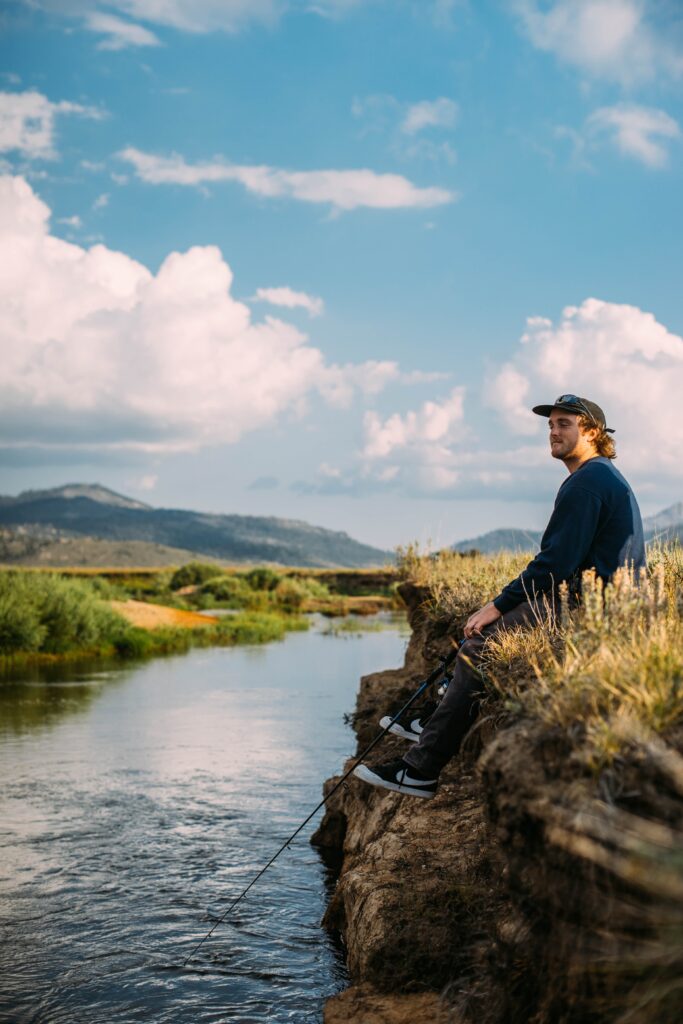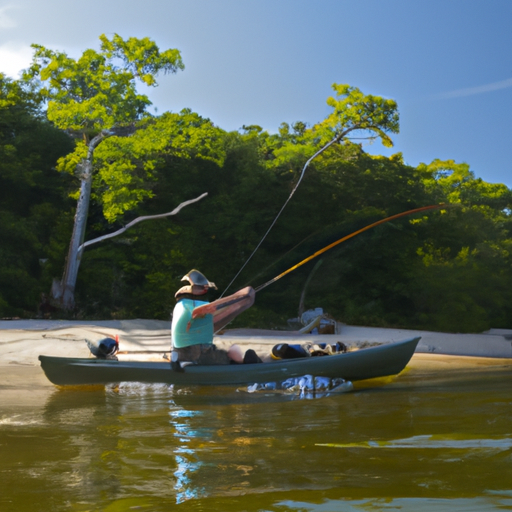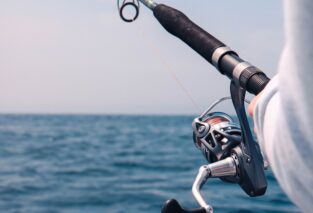Are you ready to take your fishing adventures to the next level? Look no further than the “Beginners Guide to Kayak Fishing: Essentials and Techniques.” This comprehensive guide is designed specifically for beginners who want to explore the exciting world of kayak fishing. Packed with essential tips, techniques, and expert advice, this guide will equip you with the knowledge and skills you need to successfully navigate your kayak while reeling in your catch. Whether you’re a seasoned angler or completely new to fishing, this guide will be your trusted companion as you embark on thrilling kayak fishing adventures.

Choosing the Right Kayak
When it comes to kayak fishing, choosing the right kayak is crucial. There are several types of kayaks available, each with its own unique features and benefits. Let’s take a closer look at some popular options:
Sit-on-top kayaks
Sit-on-top kayaks are a great choice for beginners. These kayaks are stable, easy to get in and out of, and offer plenty of space to move around. They are also self-draining, which means they won’t fill up with water if you happen to capsize. Sit-on-top kayaks are versatile and can be used in a variety of water conditions.
Sit-inside kayaks
Sit-inside kayaks, also known as traditional kayaks, have an enclosed cockpit where you sit inside the kayak. These kayaks offer protection from the elements and can help keep you dry. They are generally more maneuverable than sit-on-top kayaks and are a good choice for those who plan to paddle in colder water conditions.
Inflatable kayaks
If storage and transportation are a concern, inflatable kayaks may be the perfect solution. These kayaks can be easily deflated and folded up for compact storage. They are lightweight, durable, and easy to transport, making them a popular choice for those who don’t have a lot of space or a vehicle equipped to carry a traditional kayak.
Tandem kayaks
If you prefer to fish with a partner or enjoy having extra space for gear, a tandem kayak is worth considering. These kayaks are designed to accommodate two people and have a higher weight capacity. They can be a great option for couples or friends who want to share the fishing experience.
Fishing-specific kayaks
For avid anglers, fishing-specific kayaks are designed with features specifically tailored for fishing. These kayaks often have built-in rod holders, storage compartments, and other accessories that make it easier to fish from a kayak. While they may be more expensive than general-purpose kayaks, they offer added convenience and functionality.
Selecting the Right Fishing Gear
Once you have chosen the right kayak, it’s time to think about the fishing gear you’ll need. Here are some essential items to consider:
Fishing rods
Selecting the right fishing rod is crucial for kayak fishing. You’ll want a rod that is lightweight, yet strong enough to handle the fish you’re targeting. Look for a rod that is suitable for the fishing technique you plan to use and matches the species you’ll be targeting.
Fishing reels
Matching your fishing rod with the appropriate reel is important for optimal performance. There are several types of reels to choose from, including spinning reels, baitcasting reels, and spincasting reels. Consider your skill level and preference when selecting a reel.
Fishing line
Choosing the right fishing line is essential for successful kayak fishing. Monofilament, braided, and fluorocarbon lines are the most common options. Each has its own advantages and disadvantages, so consider factors such as visibility, strength, and sensitivity when making your choice.
Baits and lures
Having a selection of baits and lures is crucial for attracting fish. Live bait such as worms or minnows can be effective, as well as artificial lures such as crankbaits, soft plastics, and spinners. Experimenting with different baits and lures will help determine what works best for your fishing conditions.
Fishing accessories
To enhance your kayak fishing experience, consider investing in some fishing accessories. These can include rod holders, tackle boxes, fish finders, and anchoring systems. These accessories will help you stay organized, increase your chances of catching fish, and make your time on the water more enjoyable.

Safety Measures
Safety should always be a top priority when kayak fishing. Here are some important safety measures you should follow:
Life jacket
Wearing a properly fitting and Coast Guard-approved life jacket is non-negotiable when kayak fishing. It should be worn at all times, even if you consider yourself a strong swimmer. A life jacket can save your life in the event of an accident or unexpected capsize.
Paddle leash
A paddle leash is a valuable tool that prevents your paddle from floating away if it accidentally falls overboard. It keeps your paddle tethered to your kayak, allowing you to focus on fishing without worrying about losing your paddle.
First aid kit
Having a basic first aid kit on your kayak is essential. It should include items such as bandages, antiseptic wipes, adhesive tape, and pain relievers. Accidents can happen, and being prepared with a first aid kit can make a significant difference in an emergency situation.
Weather conditions
Before heading out on the water, always check the weather forecast. Pay attention to wind speed, precipitation, and any potential storms. Avoid kayaking in severe weather conditions, as it can be dangerous and increase the risk of capsizing.
Water conditions
Understanding the water conditions is vital for your safety. Be aware of currents, tides, and water temperature. If you are kayaking in unfamiliar waters, take the time to research the area and consult local resources for information on potential hazards or areas to avoid.
Getting Started with Kayak Fishing
Now that you have your kayak, gear, and safety measures in place, it’s time to get started with kayak fishing. Here are some essential tips for beginners:
Securing your gear
Before launching your kayak, make sure all your fishing gear is properly secured. Use rod holders and bungee cords to prevent items from shifting or falling into the water. This will ensure that your gear stays organized and within reach while you’re on the water.
Launching the kayak
To launch your kayak, find a suitable launching spot that provides easy access to the water. Check for any obstacles or hazards in the area. Carefully carry your kayak to the water’s edge, making sure the kayak is stable and balanced. Step into the kayak from the shore or a dock and push off gently, using your paddle to maneuver away from the shore.
Paddling techniques
Learning proper paddling techniques will make your time on the water more efficient and enjoyable. Hold your paddle with a relaxed grip and use your torso and core muscles to propel yourself forward. Practice different strokes, such as forward strokes, backward strokes, and sweep strokes, to navigate and maneuver your kayak effectively.
Casting techniques
Mastering casting techniques is essential for successful kayak fishing. Practice your casting in a controlled environment before venturing onto the water. Aim for accuracy and learn how to cast under different wind and current conditions to increase your chances of landing fish.
Drift fishing techniques
Drift fishing is a popular technique for kayak anglers. It involves letting your kayak drift naturally with the current while presenting your bait or lure to the fish. To effectively drift fish, position yourself upwind or up-current of the area you want to fish and allow the current to carry you along.

Finding the Best Fishing Spots
To maximize your chances of catching fish, it’s important to find the best fishing spots. Here are some tips to help you locate productive fishing areas:
Research and planning
Before heading out, do some research on the body of water you’ll be fishing in. Look for information on fish species, fishing reports, and local knowledge. Pay attention to seasonal patterns and water conditions that may impact fish behavior.
Understanding fish behavior
Understanding how fish behave and where they are likely to be found is crucial for locating fishing spots. Different fish species have different preferences regarding habitat, water depth, and temperature. Study their behavior and adapt your fishing techniques accordingly.
Natural structures
Fish are often found near natural structures such as rocks, reefs, or submerged trees. These structures provide shelter, food sources, and hiding spots for fish. Look for areas with underwater features that may attract fish and increase your chances of success.
Artificial structures
Artificial structures like bridges, piers, and docks can also attract fish. They provide hiding places for fish and often have algae or other organisms growing on them, which can attract prey. Don’t overlook these man-made structures when searching for fishing spots.
Fishfinder technology
Investing in a fishfinder can help you locate fish more efficiently. Fishfinders use sonar technology to detect underwater structures, fish, and depth. They can provide valuable information that will help you identify productive fishing areas and save you time on the water.
Essential Fishing Techniques
To become a successful kayak angler, it’s important to master various fishing techniques. Here are some essential techniques to get started with:
Bottom fishing
Bottom fishing involves targeting fish that inhabit the bottom of the water column. It is typically done using baits or lures that are presented near the bottom. Use a suitable rig, such as a Carolina rig or a drop shot rig, and select baits that imitate the natural prey of the target species.
Topwater fishing
Topwater fishing is an exciting technique that involves presenting lures on the water’s surface to entice fish to strike. This technique is most effective during low-light conditions or when fish are actively feeding near the surface. Experiment with different topwater lures, such as poppers or buzzbaits, to trigger strikes.
Trolling
Trolling is a technique that involves dragging a bait or lure behind the kayak as you paddle. It allows you to cover a larger area of water and target fish that are actively moving or following a specific path. Use specialized trolling lures or baits that can be easily pulled through the water at a consistent speed.
Jigging
Jigging is a versatile technique that involves using a weighted lure, called a jig, to attract fish. It is most commonly used in deep water or when targeting bottom-dwelling species. Vary your jigging style by experimenting with different retrieves, speeds, and depths to find what works best for the fish you’re targeting.
Fly fishing
Fly fishing from a kayak can be a rewarding experience. It involves using lightweight fly fishing gear and casting flies that imitate insects or other natural prey. Mastering the art of casting with a fly rod and precision presentation will undoubtedly enhance your kayak fishing skills.

Understanding Fish Behavior
To increase your chances of catching fish, it’s important to understand their behavior. Here are some key aspects to consider:
Feeding habits
Fish have different feeding habits, including surface feeding, bottom feeding, and feeding in specific zones within the water column. Understanding the feeding habits of the fish you’re targeting will help you select the appropriate fishing techniques and locate them more effectively.
Seasonal patterns
Fish behavior can vary throughout the year due to changes in water temperature, spawning cycles, and availability of food sources. Pay attention to seasonal patterns and adjust your fishing strategies accordingly. For example, during warmer months, fish may be more active and willing to chase fast-moving lures.
Habitat preferences
Different fish species have specific habitat preferences. Some may prefer shallow, weedy areas, while others may be found in deeper waters or near submerged structures. Research the habitat preferences of your target species to narrow down your search for productive fishing spots.
Reading water
Learning how to read the water is a valuable skill for kayak fishing. Look for signs of fish activity, such as surface disturbances, baitfish activity, or birds diving. Pay attention to water movement, currents, and eddies, as these can indicate areas where fish are likely to be found.
Observation skills
Developing good observation skills is crucial for detecting subtle clues that indicate fish presence. Look for changes in water color, temperature, or clarity. Take note of any underwater vegetation, structure, or baitfish activity. Being observant will help you make informed decisions and increase your chances of success.
Tips for Kayak Fishing Success
To improve your chances of success and make the most out of your kayak fishing trips, here are some valuable tips:
Stay organized
Keeping your gear organized is essential for a smooth and enjoyable fishing experience. Use rod holders, tackle boxes, and storage compartments to keep everything in its place. This will save you time and frustration on the water and ensure that you have easy access to your equipment when you need it.
Be patient and persistent
Kayak fishing can sometimes require patience and persistence. Fish may not always be biting, and it may take time to locate them. Don’t get discouraged if you’re not catching fish immediately. Stay focused, keep trying different techniques, and remain patient. The more time you spend on the water, the better you’ll become at finding and catching fish.
Learn from experienced anglers
Take advantage of the knowledge and experience of more seasoned kayak anglers. Join fishing forums or local fishing clubs to connect with like-minded individuals who can offer valuable insights and tips. Don’t be afraid to ask questions or seek guidance from those who have been kayak fishing for longer.
Practice casting accuracy
Casting accuracy is crucial for kayak fishing, as you often need to place your bait or lure in specific spots. Practice your casting technique regularly to improve your accuracy and distance. Set up targets in your yard or practice casting into buckets to simulate real fishing scenarios.
Pay attention to tides and currents
Understanding the impact of tides and currents on fish behavior is essential for successful kayak fishing. Research the tidal patterns in your fishing area and learn how they affect water movement and fish activity. Plan your fishing trips accordingly, taking advantage of favorable tide and current conditions.

Handling Fish from a Kayak
When you catch a fish from your kayak, it’s important to handle it properly to ensure its well-being and survival. Here are some tips for handling fish:
Proper fish handling techniques
Handle fish with care and avoid touching their gills or eyes. Wet your hands before handling the fish, as dry hands can remove their protective slime coat. Use a landing net to lift larger fish out of the water and support their weight with both hands when removing the hook.
Using landing nets
A landing net can be a valuable tool for kayak fishing. It allows you to safely land fish without risking injury or damaging your kayak. Choose a net with a soft, fish-friendly mesh that is easy to maneuver in the confined space of a kayak.
Releasing fish safely
If you catch a fish that you don’t intend to keep, release it back into the water as quickly and gently as possible. Use proper fish handling techniques to minimize stress and injury to the fish. Hold the fish in the water and gently move it back and forth to ensure it’s fully revived before letting it swim away.
Measuring and weighing fish
If you want to measure or weigh your catch, invest in a measuring board or a fish scale that can be easily operated from your kayak. Avoid keeping fish out of the water for too long, as it can cause unnecessary stress and reduce their chances of survival upon release.
Smoking or cooking fish
If you decide to keep and consume your catch, smoking or cooking the fish can be a delicious way to enjoy your kayak fishing success. However, make sure to follow local regulations regarding size and bag limits and be mindful of safe food handling practices.
Kayak Fishing Etiquette
Respecting others and the environment is essential when kayak fishing. Follow these guidelines to ensure a positive experience for everyone:
Respecting other anglers
When fishing in a popular area or alongside other anglers, be considerate and respectful. Avoid crowding or encroaching on someone else’s fishing space. Maintain a reasonable distance and communicate with other anglers to avoid conflicts or disturbances.
Protecting the environment
Practice responsible angling by minimizing your impact on the environment. Avoid littering and dispose of any trash properly. Follow local regulations regarding catch limits and size restrictions to help maintain healthy fish populations. Leave the environment as you found it, or better.
Follow local fishing regulations
Adhere to local fishing regulations and obtain any necessary permits or licenses before heading out on the water. Familiarize yourself with the rules regarding catch limits, size restrictions, and prohibited fishing areas. Respect these regulations to preserve fish populations and maintain a sustainable fishery.
Be considerate of wildlife
While kayak fishing, you may encounter various wildlife species such as birds, marine mammals, and reptiles. Observe them from a distance and avoid disturbing their natural behaviors. Maintain a respectful distance to minimize stress to the animals and their habitats.
Leaving no trace
Leave no trace of your presence when kayak fishing. Pack out any trash or waste, including fishing line, to avoid polluting the environment. Dispose of bait containers, plastic packaging, and any other waste properly and recycle whenever possible. Leave the area as pristine as you found it for future generations to enjoy.
By following these tips and guidelines, you’ll be well-prepared to embark on your kayak fishing adventures. Remember to prioritize safety, respect for others and the environment, and, most importantly, have fun exploring the waters with your kayak. Happy fishing!





